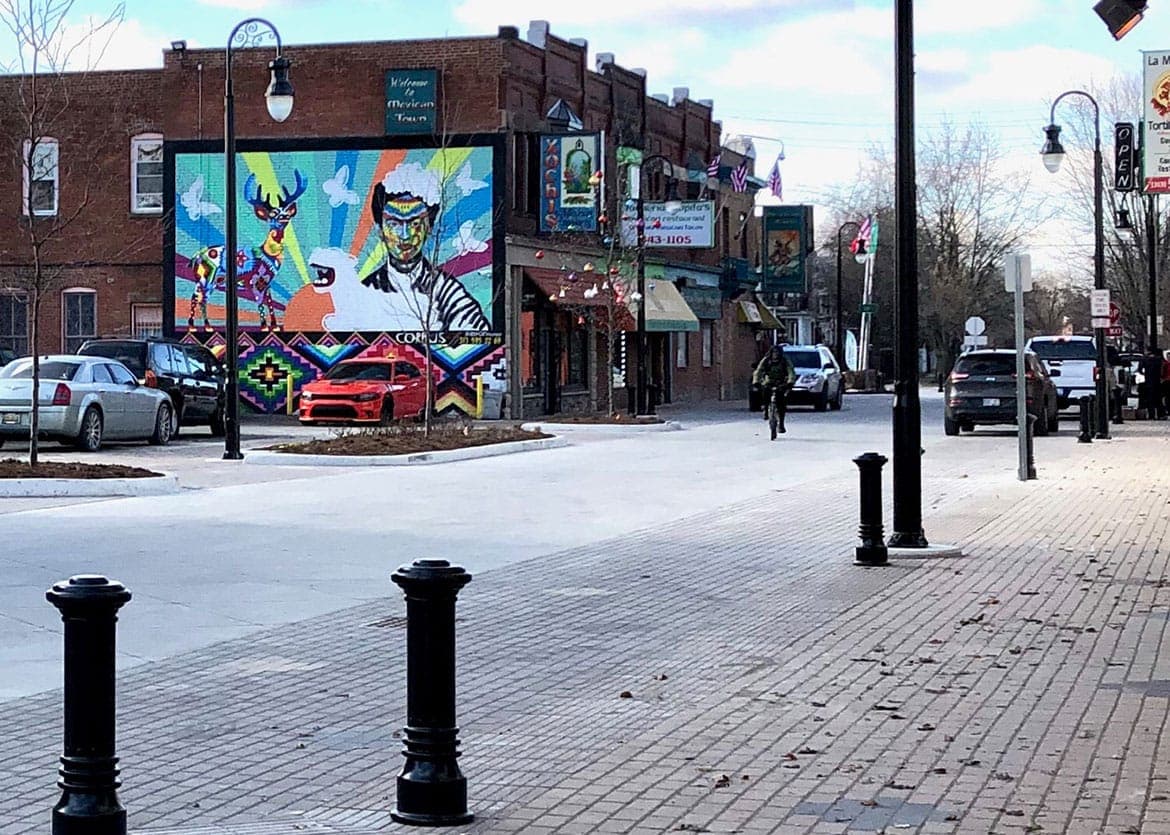
News
By Raveena John, May 30, 2024
Detroit, Michigan has made an effort to address dangerous street design and prioritize the safety of people walking. So far, the changes have been paying off. Since 2018, the city has seen a 40 percent decrease in fatalities.

The “Motor City” is reinventing itself as the “Mobility City.” Detroit has seen a decrease in pedestrian fatalities, from 142 deaths in 2018 down to 84 in 2022, even as the population has grown and after a spike in fatalities during the pandemic, with 183 deaths in 2020. With a relatively new Streets for People Plan published in September 2022, Detroit’s commitment to prioritizing safety, equity, access, health, and economic opportunity through the improvement of the city’s streets has a head start from initiatives across the city.
What is responsible for Detroit’s move in the right direction?
- Residential traffic calming: In residential areas, residents can request traffic calming devices through the Speed Hump Program. This initiative began as a pilot in 2018 and has since installed over 10,000 speed humps on 320 residential streets, finding a 36 percent decrease in crashes on those streets.
- Enhanced streetscapes: In commercial areas, the city’s ongoing Streetscape Program redesigns key corridors for beautification and economic development. These designs are specific to each corridor and generally involve reducing the driving lanes and providing more space for people walking, biking, and using transit, with measures like providing bike lanes, wide sidewalks, and benches. One streetscape in particular, Bagley Street, is now a curbless “shared street” that can easily function as a plaza to host festivals and community events.
- Greenway network: In addition to these location-specific improvements, Detroit is building out an extensive bike network, including the Joe Louis Greenway, a recreational trail that will connect four cities across 27.5 miles.
The city plans to continue these improvements, investing in the safety of all road users, the vibrancy of its unique neighborhoods, and the economic vitality of the region.
What’s Next
This progress is likely to continue, as Detroit recently received U.S. Department of Transportation funds in support of roadway improvements to supplement local, state, and philanthropic investment: $2 million in 2024 from the Reconnecting Communities and Neighborhoods Program to develop a lid on the downtown portion of I-75, and $24.8 million in 2023 from the Safe Streets & Roads for All Program, for a variety of pedestrian safety and transit access improvements.
Related News

© 2025 Smart Growth America. All rights reserved
Site By3Lane Marketing










